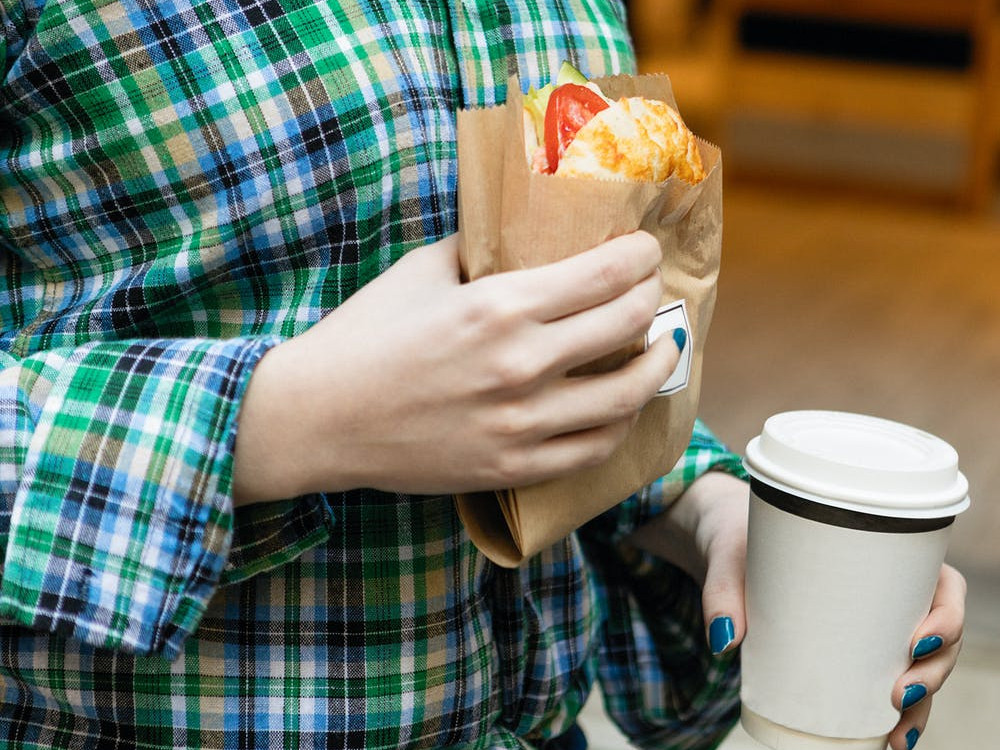Battling Nausea Directly After Eating

September 29th, 2021 | Nausea
If You Suffer After Meal Nausea, Consider These Tips
Feelings of nausea can be uncomfortable whenever you experience them. Although nausea can set in at any time for a variety of reasons, experiencing an uncomfortable feeling in your tummy directly after eating may be related to your last meal. Feelings of discomfort stomach pain can feel extra severe on a full stomach. Here are some tips to avoid and resolve nausea experienced directly after eating. If you want some activities to help with nausea, look to this article.
Eat Smaller Portions
One of the major reasons you may be feeling nauseous directly after a meal is the size of your portion. When we eat a big meal quickly, we pack our stomach full of food before it has time to digest and send signals to our brain that we’re full. This extra pressure in your stomach can make your muscles feel pressured, making you feel nauseous. Eating smaller portions slowly will give your body the time to react to the food that you’re eating. Your brain will receive the message that you’re full far before you overextend your stomach.
Drink Plenty of Water
Stomachs need water to digest food. Our stomach muscles need to be well hydrated so that they can properly push our food through our digestive tract. When we are dehydrated and eat a big meal, our stomach may not have what it needs to properly digest food. This could lead to cramping and a queasy tummy as soon as your meal reaches your stomach.
Avoid overly Smelly Foods
A smelly meal may turn our stomach way before it ever reaches our gut. Foods with overly aggressive smells can cause the body to have a negative reaction. When we smell something, it has a strong odor, our body may send signals to our stomach so that we avoid trying to eat it. Nausea is one of the defense mechanisms our bodies have. Smelly foods may trigger your nausea and have you feeling queasy directly after you eat. If you plan on eating a portion of smelly food, consider opening a window, turning a fan on, or eating outside. This can reduce the chances that a food’s odor will have you feeling queasy.
Avoid mixing extreme temperatures
The temperature of your food can affect how you feel when you eat it. By the time your food reaches your stomach, it is not fully heated or cooled to your body temperature. Hot foods can heat the stomach, while cold foods can cool it down. Mixing extreme temperatures in a single meal could cause the stomach to tense. Your stomach is made of muscle. Muscle is sensitive to temperature. It can expand and relax when it is warm and tense up when it gets cold. If you rapidly change the temperature inside your stomach, the muscles may tense and relax quickly causing feelings of queasiness and discomfort. Try not to shock your stomach muscles by mixing in an ice-cold food with a very warm soup. Although this has been widely disproven as a direct cause of nausea, the temperature of the foods you eat can worsen feelings of nausea if your stomach is already filled.
Try Our Queasy Products
Of course, one solution for your nausea is to keep some Queasy Drops on hand. Queasy Drops are a natural way to alleviate queasiness from a variety of sources.
Recent Posts
- Morning Sickness All Day? Causes, Relief Tips, and When to Call in 2025
- Taste Fatigue in Pregnancy: Switch Flavors to Ease Nausea
- Morning Sickness & Dehydration: Break the Cycle with Safe Hydration Tips 2025
- Morning Sickness Relief 2025: Natural Flavor Remedies with Ginger, Mint, Citrus
- Morning Sickness Hacks That Actually Help, From Real Parents in 2025
Categories
- All-Natural (4)
- Blog (47)
- Cancer (71)
- Diet (15)
- Holidays (20)
- Lifestyle (67)
- Motion Sickness (43)
- Nausea (98)
- New Mothers (34)
- Oncology Testimonials (3)
- Prebiotics (1)
- Preggie Products (5)
- Preggie Testimonial (23)
- Pregnancy (150)
- Queasy Products (6)
- Queasy Testimonial (17)
